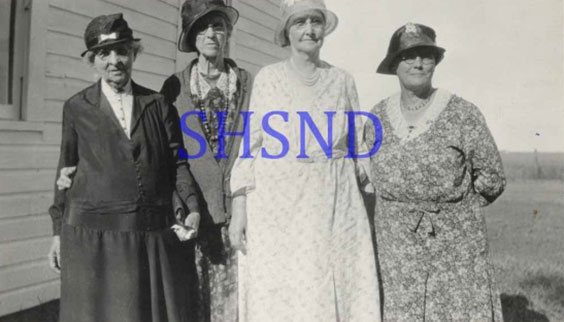Flying High: New UAV Flights at North Dakota State Historic Sites
Among the many things about my job I truly enjoy are the opportunities that arise, for one reason or another, to get out of the office on a beautiful, sunny day! Being able to visit one of the state historic sites that I’ve never been to is an added bonus. Even better if I get to visit TWO sites. And if I also have the opportunity to fly our quadcopter at those sites . . . well then, you’ve just about described a perfect work day for me!
I’ve blogged about flying the Society’s quadcopter (also known as a “drone,” “unmanned aerial vehicle,” or “UAV”) several times before [check out some of my earlier entries about flying a drone at North Dakota’s state historic sites, including Double Ditch Indian Village, Menoken Indian Village, Fort Clark, and Fort Rice, among others.]
To date, I’ve piloted a UAV at 13 prehistoric or historic archaeological sites in North Dakota, including 9 state historic sites managed by the State Historical Society. I hope to fly a great deal more in 2019 and beyond. The technology, opportunities for application, and regulatory environment have all evolved since our earliest flights in 2014. But the reasons for these flights all share the same basic purpose: to document preservation concerns about cultural resources, and to enable interpretation and management of North Dakota’s state historic sites.

Aerial image of Cannonball Stage Station State Historic Site, Grant County, North Dakota, taken by State Historical Society quadcopter on October 17, 2018. View is to the east. The altitude of the quadcopter was 400 feet and wind speed was 5-7 miles per hour when this image was taken. Surface depressions marking the location of two dugout structures and a barn are visible near the fenced area.
I was fortunate to fly the quadcopter at two sites on a beautiful fall day in October 2018. I’d like to share some images and video from these recent flights over the Cannonball Stage Station and Fort Mandan Overlook State Historic Sites. Cannonball Stage Station and Fort Mandan Overlook are among the lesser visited of the 57 historic sites in our state. Both are in beautiful, remote locations and definitely off the beaten path.
Located near Raleigh, in Grant County, North Dakota, the Cannonball Stage Station was the fifth stop after Bismarck on the Bismarck to Deadwood Stage Trail. For a brief period from 1877 to 1880, a booming stagecoach line linked the westernmost stop of the Northern Pacific Railroad in Bismarck to the gold fields of the Black Hills. Travelers would have the opportunity to have a short rest and a quick meal here while horses were swapped, and the stage was quickly back on its way. This unique period in North Dakota is well- interpreted at the site, picnic facilities are available, and it’s a peaceful spot. Earthen dugouts clearly visible at the site represent the locations of the stage office, another building, and a barn. Check out a video from a recent UAV flight at Cannonball Stage Station State Historic Site.

Aerial image of Fort Mandan Overlook State Historic Site, McLean County, North Dakota, taken by State Historical Society quadcopter on October 16, 2018. View is to the northwest. The altitude of the quadcopter was approximately 100 feet above ground surface, with winds gusting to 30 miles per hour when this image was taken. Two historical markers present at the site are visible in this image, as well as the dramatic bluff edge.
Fort Mandan Overlook State Historic Site is located near Washburn, North Dakota, in McLean County. This site overlooks the former location of Fort Mandan, constructed and occupied during the fall and winter of 1804–1805 by the Lewis and Clark Expedition. The fort location has long since been eroded away by the nearby Missouri River, but there are other stories here as well. During archaeological investigations conducted at the site by the State Historical Society in 1991–1992, a fortification ditch dating to the late 1700s–early 1800s and a Plains Village campsite dating to the 14th century were documented. Interpretive signs are present, and the viewshed from this location is stunning. Watch your step, though—the bluff edge is steep. Check out the video from a recent UAV flight at Fort Mandan Overlook State Historic Site.
I was happy to add Cannonball Stage Station and the Fort Mandan Overlook to the list of state historic sites I’ve visited and documented from the air. Someday, I’m going to get to every one of them. In the meantime, I hope you’ll consider a trip sometime soon to these or one of the many other state historic sites in North Dakota. I hope the video links in this blog help to give you just a hint of the historical significance and natural beauty of these locations. The videos were a lot of fun to shoot! Many thanks to the video editor who helped me out on short notice, and to the Bismarck/Mandan local musicians that provided the accompanying music. Enjoy!






